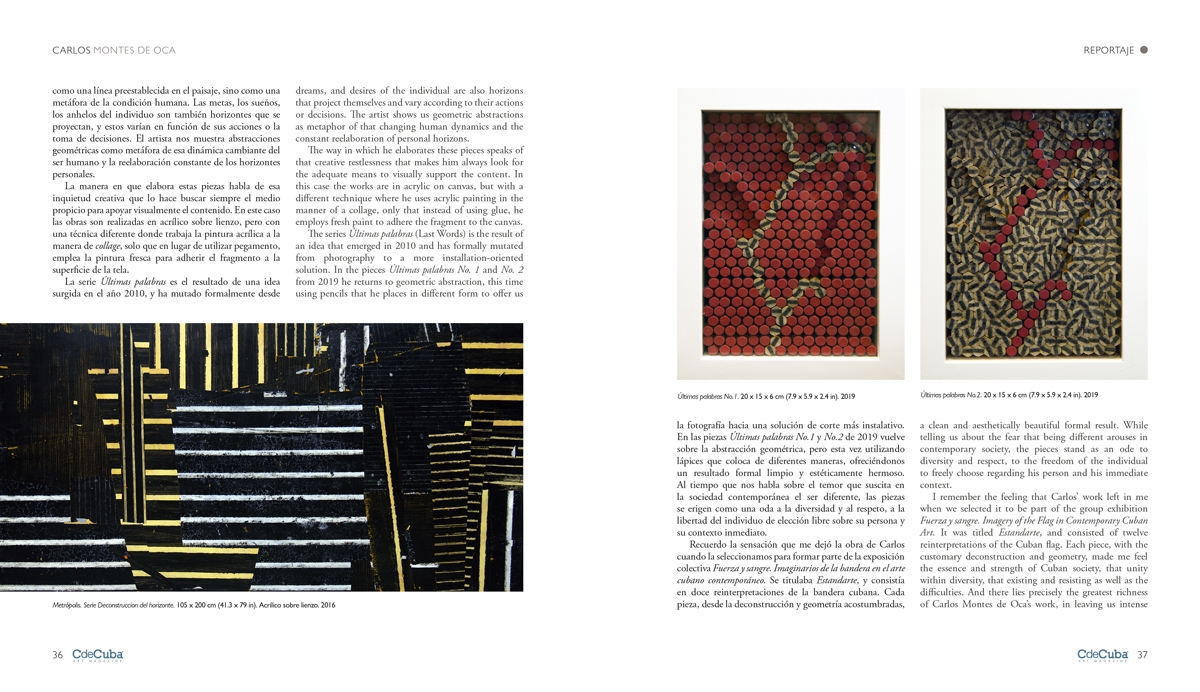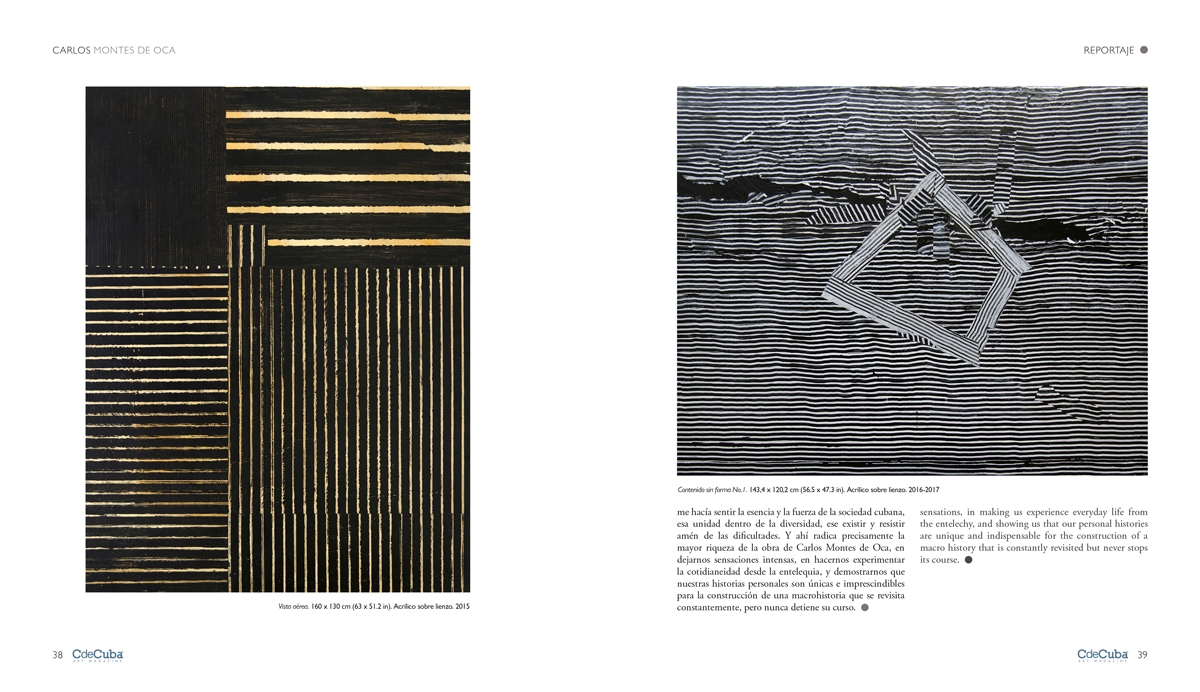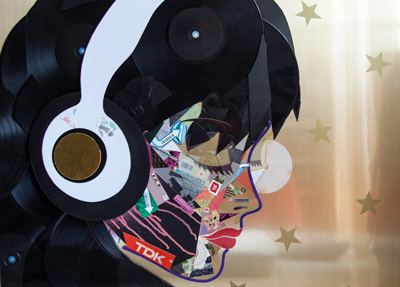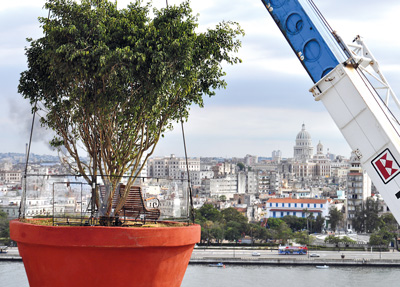[vc_row][vc_column][vc_column_text]
Constructing the Idea and Deconstructing the Form
Shirley Moreira
For Carlos Montes de Oca (Camagüey, 1968), creation is an open window to infinite technical and discursive possibilities. If we review his artistic archives, it will not surprise to find simultaneous series, processes of more than five years of development or totally diverse formal solutions. And it is so because his work is constant and growing. His attitude of commitment to art prevents him from accumulating ideas and makes him channel them through the adequate visual means for each discourse, since, as he himself expresses, «There is more time than life and the ideas are tied to the material world.»
Drawings, paintings, photographs, videos, installations, and performance are part of the artist’s work in recent years. In them it is possible to appreciate his expanded artistic concept, his affiliation to a conceptual universe that constantly uses metaphors to communicate meanings, and a fair balance between the aesthetics of bad painting and the most rigorous and clean formal elaboration. He always makes the form serve the content, and the content is broad and recurrent; hence we perceive his production as highly heterogeneous.
Art somehow always shows the traces of its time and context. Carlos is interested in this type of analysis in which history and its sometimes the cyclical condition take the lead. It offers spaces for the spectator to dialogue with his everyday dynamics from different angles; hence, power relations and social or political problems are subthemes to which he arrives in that constant search for meta-stories.
In the piece Suicidal Note (2010-2012) he appeals to the constant processes of history. He takes as reference the part of Tacón Street that the island’s governor general ordered to cover with wooden paving stones in order to avoid the noise of cars and people in front of the Palace of the General Captains. The artist reproduces a fragment of the street, and through the absence of some cobblestones recreates the text «Suicidal Note». He tells us about the whims and eccentricities of many people exerting power at different levels and about the danger of such positions, again using a story to analyze problems of the contemporary society.
In many of his works he seeks to deconstruct the forms, to bring the image of the pieces to their geometric or material essence in order to penetrate a larger universe of meanings from the apparent simplicity of abstraction. With Deconstruction of the Horizon, a series he presented in 2015 at Factoría Habana as part of the 12th Havana Biennial in which he has continued to work, he seeks to direct the spectator’s reflection toward the horizon, not as physical space or pre-established line in the landscape, but as metaphor of the human condition. The goals, dreams, and desires of the individual are also horizons that project themselves and vary according to their actions or decisions. The artist shows us geometric abstractions as metaphor of that changing human dynamics and the constant reelaboration of personal horizons.
The way in which he elaborates these pieces speaks of that creative restlessness that makes him always look for the adequate means to visually support the content. In this case the works are in acrylic on canvas, but with a different technique where he uses acrylic painting in the manner of a collage, only that instead of using glue, he employs fresh paint to adhere the fragment to the canvas.
The series Últimas palabras (Last Words) is the result of an idea that emerged in 2010 and has formally mutated from photography to a more installation-oriented solution. In the pieces Últimas palabras No. 1 and No. 2 from 2019 he returns to geometric abstraction, this time using pencils that he places in different form to offer us a clean and aesthetically beautiful formal result. While telling us about the fear that being different arouses in contemporary society, the pieces stand as an ode to diversity and respect, to the freedom of the individual to freely choose regarding his person and his immediate context.
I remember the feeling that Carlos’ work left in me when we selected it to be part of the group exhibition Fuerza y sangre. Imagery of the Flag in Contemporary Cuban Art. It was titled Estandarte, and consisted of twelve reinterpretations of the Cuban flag. Each piece, with the customary deconstruction and geometry, made me feel the essence and strength of Cuban society, that unity within diversity, that existing and resisting as well as the difficulties. And there lies precisely the greatest richness of Carlos Montes de Oca’s work, in leaving us intense sensations, in making us experience everyday life from the entelechy, and showing us that our personal histories are unique and indispensable for the construction of a macro history that is constantly revisited but never stops its course.
[/vc_column_text][/vc_column][/vc_row][vc_row][vc_column][vc_column_text]
[/vc_column_text][/vc_column][/vc_row]





